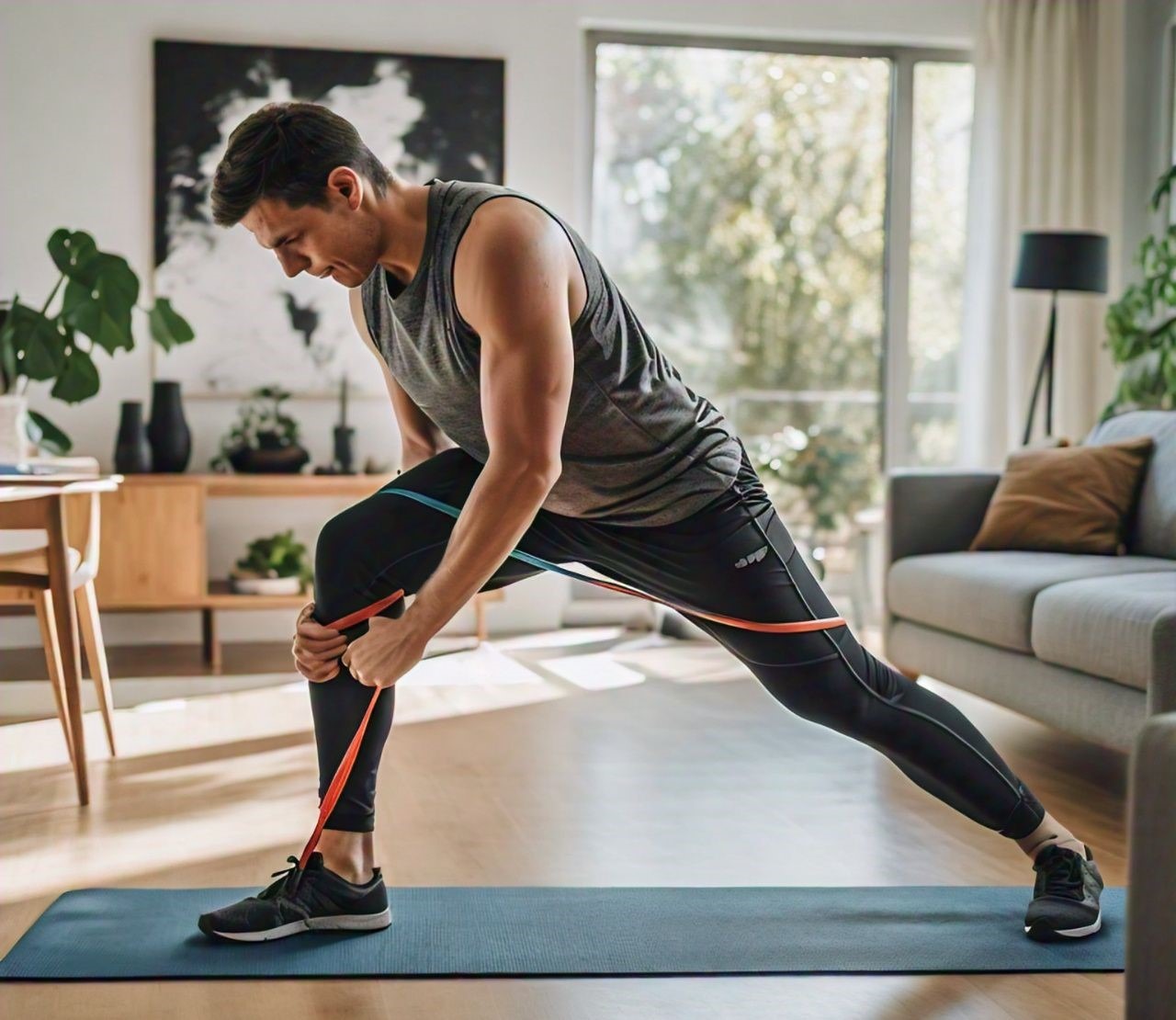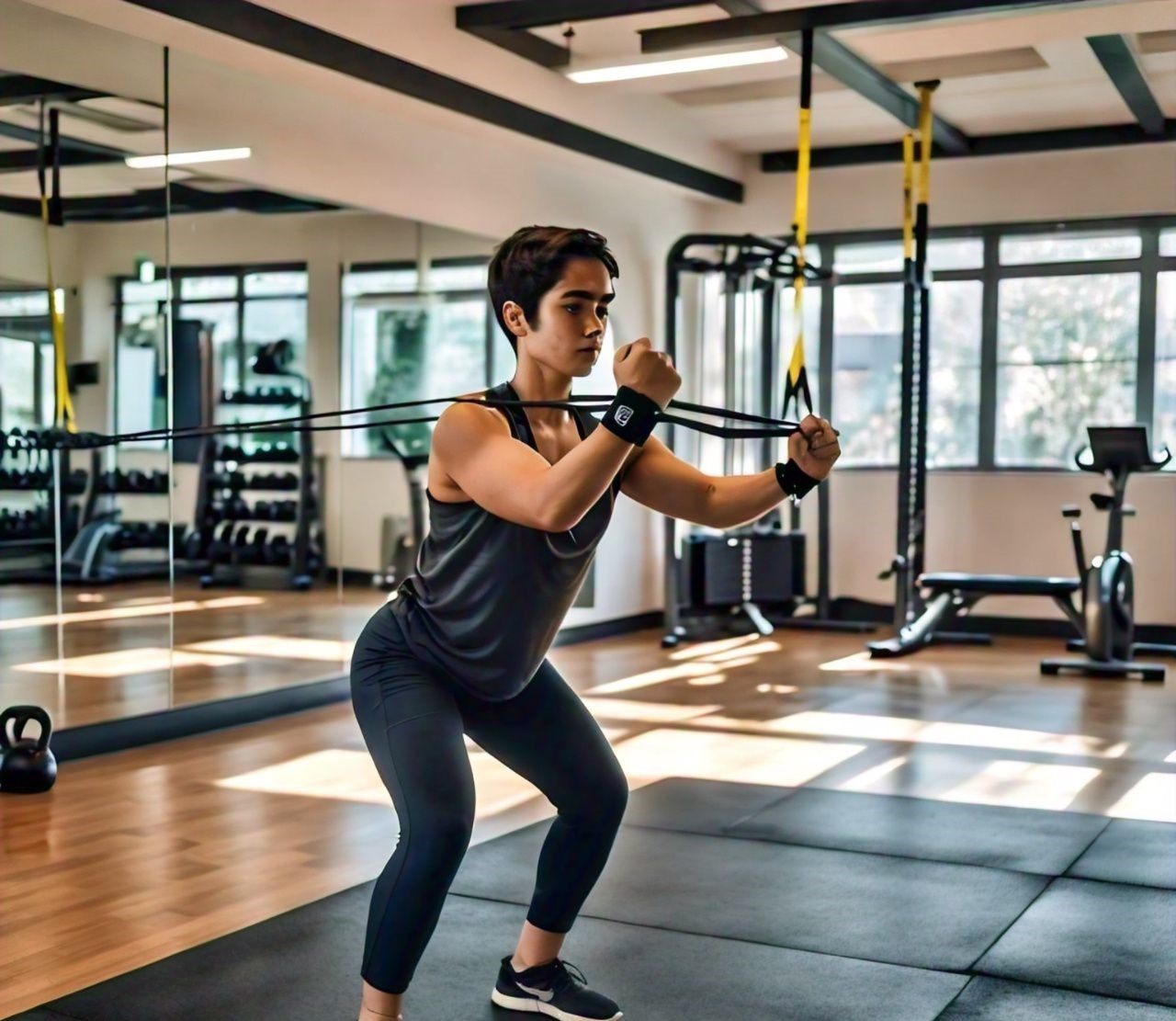Introduction: Hamstring Exercises at Home: Strengthen Your Legs Without the Gym
Hamstring exercises are crucial for building a balanced, strong, and injury-resistant lower body. Hamstrings, the muscle group located at the back of your thighs, play a vital role in various daily movements, from walking and running to bending and lifting. Neglecting these muscles can lead to weakness, imbalances, and even injury. Fortunately, you don’t need a gym membership to work on your hamstrings effectively. In this blog post, we will introduce you to 7 new hamstring exercises at home that require minimal equipment and are easy to incorporate into your daily routine.
Understanding the Hamstring Muscles
To effectively train your hamstrings, it’s essential to understand their anatomy and function. The hamstrings consist of three primary muscles: the Biceps Femoris, Semitendinosus, and Semimembranosus. These muscles run along the back of the thigh, from the hip down to the knee, and are responsible for knee flexion and hip extension. Understanding these muscles’ roles can help you focus on the right movements and techniques when performing hamstring exercises at home. Strong hamstrings are not only crucial for athletes but also for anyone looking to maintain overall leg health and prevent common injuries, such as strains or tears.
Benefits of Hamstring Exercises at Home
Why should you invest time in hamstring exercises at home? The benefits of strengthening your hamstrings go beyond just muscle aesthetics. Here are some key advantages:
- Improved Athletic Performance: Strong hamstrings enhance your ability to run faster, jump higher, and change directions more quickly. They are crucial for sports that involve sprinting, such as soccer, basketball, and track events.
- Injury Prevention: Weak hamstrings are prone to strains, especially in athletes. By strengthening these muscles through hamstring exercises at home, you reduce the risk of injuries not only to the hamstrings themselves but also to the knees and lower back.
- Enhanced Stability and Balance: The hamstrings play a vital role in stabilizing the hips and knees. Strong hamstrings contribute to better posture and reduce the likelihood of falls, especially in older adults.
- Reduced Lower Back Pain: Tight or weak hamstrings can contribute to lower back pain. By maintaining flexible and strong hamstrings through regular hamstring exercises at home, you can alleviate strain on the lower back and improve overall mobility.
Getting Started with Hamstring Exercises at Home
What do you need to start hamstring exercises at home? The good news is that you don’t need fancy equipment. Here’s a list of basic items that can enhance your workout:
- Resistance Bands: Versatile and affordable, resistance bands are excellent for adding tension to exercises without needing heavy weights.
- Yoga Mat: A comfortable surface for floor exercises.
- Stability Ball: Great for balance and core engagement exercises.
- Dumbbells: Light to moderate weights can add resistance to certain movements.
Proper warm-up is crucial before diving into any hamstring exercises at home. Start with 5-10 minutes of light cardio, such as brisk walking or jogging in place, followed by dynamic stretches targeting the legs. This preparation increases blood flow to the muscles and reduces the risk of injury.
1. Resistance Band Leg Curls
Resistance Band Leg Curls are an effective way to target the hamstrings using minimal equipment. This exercise mimics the leg curl machine found in gyms but can be done at home with just a resistance band. Resistance Band Leg Curls are one of the best hamstring exercises at home for isolating the hamstring muscles.
How to Perform Resistance Band Leg Curls at Home
- Anchor a resistance band to a sturdy object at ground level.
- Lie face down on a yoga mat with the band looped around your ankles.
- Slowly curl your legs up towards your glutes, squeezing the hamstrings.
- Return to the starting position with control.
Tips for Proper Form:
- Keep your hips pressed into the floor to isolate the hamstrings.
- Avoid using momentum; focus on slow, controlled movements.
Benefits:
- Effective hamstring isolation.
- Low-impact exercise suitable for all fitness levels.
Variations:
- Perform single-leg curls for increased difficulty.
- Use a thicker resistance band for more resistance.
2. Glute Bridge March
The Glute Bridge March is a dynamic exercise that targets the hamstrings and glutes while also engaging the core muscles. This exercise is excellent for building strength and stability, making it one of the most efficient hamstring exercises at home.
How to Perform a Glute Bridge March
- Lie on your back with your knees bent and feet flat on the floor, hip-width apart.
- Lift your hips into a bridge position, ensuring your body forms a straight line from shoulders to knees.
- While keeping your hips elevated, lift one knee towards your chest, then lower it back down.
- Alternate legs in a marching motion.
Tips for Proper Form:
- Keep your hips level and avoid letting them sag.
- Engage your core throughout the movement to maintain stability.
Benefits:
- Strengthens the hamstrings, glutes, and core.
- Improves hip stability and balance.
Advanced Variations:
- Use a resistance band around your knees for added resistance.
- Perform the march with your feet on a stability ball for increased difficulty.
3. Stability Ball Hamstring Curl
Stability Ball Hamstring Curls are a challenging exercise that targets the hamstrings and glutes while engaging the core for stability. This is one of the best hamstring exercises at home for those looking to increase muscle strength and control.
How to Perform Stability Ball Hamstring Curls
- Lie on your back with your feet resting on a stability ball and arms by your sides.
- Lift your hips off the floor to form a straight line from shoulders to feet.
- Bend your knees and roll the ball towards your glutes by curling your legs.
- Slowly extend your legs to return the ball to the starting position.
Tips for Proper Form:
- Keep your hips lifted throughout the movement.
- Focus on using the hamstrings to curl the ball, not your lower back.
Benefits:
- Engages the hamstrings, glutes, and core.
- Improves balance and stability.
Modifications:
- Beginners can reduce the range of motion.
- Advanced users can perform single-leg curls.
4. Single-Leg Romanian Deadlift
The Single-Leg Romanian Deadlift is an excellent exercise for building hamstring strength and improving balance and coordination. As one of the key hamstring exercises at home, it provides a great way to engage the entire posterior chain without needing heavy equipment.
How to Perform a Single-Leg Romanian Deadlift at Home
- Stand on one leg with a slight bend in the knee, holding a dumbbell in the opposite hand.
- Hinge at the hips and lower the dumbbell towards the ground, keeping your back straight.
- Extend the non-standing leg behind you for balance.
- Return to the starting position by engaging your hamstrings and glutes.
Tips for Proper Form:
- Keep your back flat and avoid rounding the shoulders.
- Move slowly to maintain balance and control.
Benefits:
- Targets the hamstrings, glutes, and lower back.
- Enhances balance and coordination.
Using Dumbbells for Added Resistance:
- Start with a light dumbbell to master the form.
- Gradually increase the weight as you become more confident and stable.
5. Hamstring Walkouts
Hamstring Walkouts are a simple yet effective bodyweight exercise that targets the hamstrings and core. As one of the versatile hamstring exercises at home, it allows you to engage the hamstrings with minimal equipment.
How to Perform Hamstring Walkouts
- Start in a glute bridge position with your hips lifted.
- Slowly walk your feet out away from your glutes, keeping your hips elevated.
- Walk your feet back towards your glutes to return to the starting position.
Tips for Proper Form:
- Maintain a straight line from shoulders to knees.
- Move slowly and with control to engage the hamstrings fully.
Benefits:
- Excellent for building hamstring endurance.
- Engages the core and glutes.
Progression Techniques:
- Increase the distance of the walkouts for a greater challenge.
- Perform on a slippery surface with socks for added difficulty.
6. Reverse Plank with Leg Lift
The Reverse Plank with Leg Lift is a full-body exercise that emphasizes the hamstrings, glutes, and core muscles. This exercise is one of the most dynamic hamstring exercises at home, combining strength and flexibility.
How to Perform a Reverse Plank with Leg Lift
- Sit on the floor with your legs extended and hands placed behind you, fingers pointing towards your feet.
- Lift your hips off the ground to form a straight line from head to heels.
- Lift one leg towards the ceiling while keeping your hips elevated.
- Lower the leg and repeat on the other side.
Tips for Proper Form:
- Keep your body in a straight line; avoid letting your hips sag.
- Engage your core to support your lower back.
Benefits:
- Strengthens the hamstrings, glutes, and core.
- Improves overall body stability and strength.
Advanced Modifications:
- Hold the leg lift for a longer duration to increase intensity.
- Use ankle weights for added resistance.
7. Lateral Band Walks
Lateral Band Walks are a great exercise for targeting the outer hamstrings, glutes, and hip muscles. This exercise is one of the most effective hamstring exercises at home for building lateral strength and stability.
How to Perform Lateral Band Walks
- Place a resistance band around your legs, just above your knees.
- Bend your knees slightly and push your hips back.
- Step to the side with one foot, followed by the other, maintaining tension on the band.
- Continue walking sideways, then switch directions.
Tips for Proper Form:
- Keep your feet pointed forward and avoid collapsing your knees inward.
- Maintain tension on the band throughout the exercise.
Benefits:
- Engages the hamstrings, glutes, and hip muscles.
- Improves lateral movement and stability.
Increasing Intensity with Resistance Bands:
- Use a heavier resistance band for more challenge.
- Perform the exercise with a squat for added difficulty.
Safety Tips for Home Workouts
Safety is paramount when performing hamstring exercises at home. Here are some key tips to keep in mind:
- Focus on Proper Form: Correct form ensures that you’re targeting the right muscles and minimizes the risk of injury. Always prioritize quality over quantity.
- Listen to Your Body: Pay attention to any signs of discomfort or pain. If you feel any sharp pain, stop the exercise immediately and assess your form.
- Start Slow: Begin with exercises that match your current fitness level and gradually increase the intensity as your strength improves.
Incorporating Hamstring Exercises into Your Routine
How often should you perform hamstring exercises at home? A good starting point is 2-3 times per week, allowing for rest days in between to give your muscles time to recover and grow. Consistency is key to seeing results, so make sure to include hamstring exercises as a regular part of your workout routine.
Sample Weekly Workout Routine:
- Day 1: Full-body workout with focus on hamstrings (e.g., Resistance Band Leg Curls, Glute Bridge March)
- Day 2: Upper body workout (e.g., push-ups, dumbbell rows)
- Day 3: Lower body workout (e.g., Stability Ball Hamstring Curl, Single-Leg Romanian Deadlift)
- Day 4: Rest or light activity (e.g., walking, yoga)
- Day 5: Full-body workout with hamstring emphasis (e.g., Hamstring Walkouts, Reverse Plank with Leg Lift)
- Day 6: Core workout (e.g., planks, bicycle crunches)
- Day 7: Rest or active recovery (e.g., stretching, foam rolling)
Conclusion
Incorporating these 7 new hamstring exercises at home into your routine can significantly improve your lower body strength, balance, and overall fitness. By focusing on these exercises, you’ll not only enhance your athletic performance but also reduce the risk of injury and improve your daily functional movements. Remember, consistency and proper form are key to seeing results. Start incorporating these hamstring exercises into your workout routine today, and enjoy the benefits of a stronger, healthier body!
For more information on fitness and health, check out these resources:
Explore more articles on our site:
- How to Increase Running Stamina for Beginners at Home
- What Happens if You Don’t Get Enough Sleep Consistently: Effects and Solutions
- The Ultimate Guide to Healthy Living in 2024
- The Future of Artificial Intelligence: What to Expect
- Unlocking the Potential of Chat GPT Software: Revolutionizing AI Conversations
- Best Sleeping Position for Peripheral Artery Disease [New 2024]
- How to Increase Running Stamina for Beginners at Home
- 5 New Inner Thigh Exercises for Men and Women




